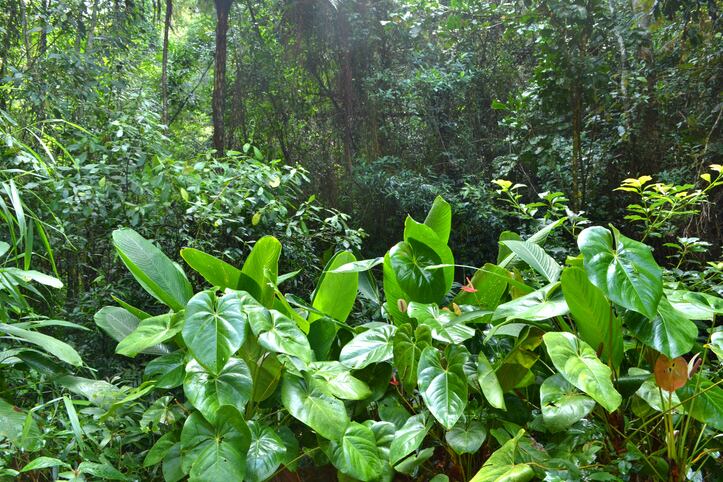This trove of new microorganisms—which could be thought of as roughly analogous to the microbiomes of humans and other animals—is only beginning to be described, according to new research published in the journal Planta Medica.
In a paper titled Brazilian Plants: An Unexplored Source of Endophytes as Producers of Active Metabolites researchers from the Federal University of Paraná, Department of Genetics, Curitiba, Brazil reviewed the research into the community of endophytes that can be found within the plants of the country.
What qualifies as an endophyte?
Just as with the history of research into the microbiomes of animals, including humans, there is some disagreement within the botanical community about what qualifies as an ‘endophyte ’– or a bacterium or fungus that lives within a plant yet causes no harm or even confers a benefit – and a pathogen.
“The coexistence of plants and endophytes remains unclear, and the main question is: Why do plants not defend themselves against internal colonizers? So far, it seems that the momentary symbiotic relationship between the plant and the endophyte is established,” the authors noted.
This symbiotic relationship can include providing useful metabolites to the plant, helping it to obtain essential nutrients such as nitrogen, phosphorus and iron from the environment. The endophytes can also produce secondary metabolites that help defend the plant against pathogens.
Unimaginable diversity
Brazil stands at the pinnacle of the world’s biodiversity, the researchers noted. It is the most diverse of the 17 so-called “megadiverse” nations. It houses more than 55,000 plant species, which represents 22% of the total of plant species on Earth.
Brazil is divided into six biomes: the Amazonian rainforest, the Caatinga, a region of desert vegetation in the country’s northeast, the Cerrado, a savanna region in the central south, (Savannah) and the Pampa, a plains region bordering Argentina and Paraguay. The sixth biome is the Pantanal, a seasonally flooded grassland region bordering Bolivia that is the world’s largest tropical wetland.
Given that huge number of species and the diverse environments in which they live, the authors said the variety of different organisms present as endophytes is vast indeed.
“Although plant diversity is well documented, the number and richness of microorganisms in most countries remain unlisted, and Brazil is no exception. In view of species richness, two biomes are recognized as global biodiversity hot spots, the Brazilian Cerrado and the Atlantic Forest, and can represent an inexhaustible source of microorganisms,” they noted.
The interest in this area has been ramping up markedly in the past decade. The authors uncovered 67 papers published in the years 2012-2017 that did bioprospecting and species isolation and identification among endophytes in Brazil. Those papers looked into endophytes present in 54 plant species, with plants in the Fabaceae (legumes), Myrtaceae (myrtle), and Asteraceae (daisy) families being the most heavily represented.
The endophytes discovered in those studies were about evenly split between the bacteria and fungi kingdoms. Among fungi, organisms in the Ascomycota phylum made up the overwhelming majority, while in bacteria, several phylums were more evenly represented, including organisms in the Bacteroidetes and Firmicutes classifications. These phyla are the dominant ones in the makeup of human microbiomes in Western countries.
New compounds
The authors noted that their review of the 67 papers shows that at least seven heretofore unknown compounds have been isolated from the metabolites of these various endophytes, in the chemical classes of butanolide (γ-lactone, δ-lactone), glyceride (monoacylglycerol), alternariol, and azaphilone (mycoleptones). They said the mycoleptones, isolated from endophytic strain M. indicus isolated from the medicinal plant Borreria verticillata are particularly interesting.
“Azaphilones are known for their range of biological activity, such as antimicrobial, nematicidal, and anti-inflammatory. Andrioli et al. demonstrated that the new mycoleptones are non-selective compounds with antileishmanial and cytotoxic activities,” they wrote.
Just scratching the surface
These seven new compounds represent the tiniest fraction of what remains to be discovered, the authors said.
“Endophytes found in Brazil have been linked as a source of bioactive molecules, some of them with a new molecular structure. Biotechnological advances contribute to enhancing the importance of Brazilian diversity, and new species and bioactive compounds are waiting to be reported,” they concluded.
Source: Planta Medica
Brazilian Plants: An Unexplored Source of Endophytes as Producers of Active Metabolites
DOI: 10.1055/a-0847-1532
Authors: Savi, DC, Aluizio, R, Glienke, C


